Clark's Dubbing Blocks
Moderators: William Anderson, letumgo
Re: Clark's Dubbing Blocks
Yes, I'll second Ray's recommendation, "The Fly Fishers Craft" is a great book to add to the library.
I took a day class taught by Mr. Martin called "The Antique Angler" a number of years ago at the FFF International Conclave in Livingston, MT. One of the best I have ever taken. A lot of the material was from this book. We did everything from tying old flies, to twisting horsehair leaders to shaping and forging hooks that day.
I took a day class taught by Mr. Martin called "The Antique Angler" a number of years ago at the FFF International Conclave in Livingston, MT. One of the best I have ever taken. A lot of the material was from this book. We did everything from tying old flies, to twisting horsehair leaders to shaping and forging hooks that day.
I hate it when I think I'm buying organic vegetables, and when I get home I discover they are just regular donuts.
http://www.oldhatflytying.com
http://www.oldhatflytying.com
- William Anderson
- Site Admin
- Posts: 4569
- Joined: Mon Feb 23, 2009 3:14 pm
- Location: Ashburn, VA 20148
- Contact:
Re: Clark's Dubbing Blocks
Carl, that's a good one. I had a chance to flip through Rays copy and it went to the top of my list. It's interesting how so many of us are drawn in by some facet of the sport and soon find ourselves engaged in aspects that would have never occurred to us before. That book really covers a lot of ground. Sounds like an interesting class.
I'll do something soon to steer this thread back toward the subject of block design and techniques, but I hate to miss an opportunity as well. I would be interested in hearing a string of every ones favorite quotes in a new thread.
I'll do something soon to steer this thread back toward the subject of block design and techniques, but I hate to miss an opportunity as well. I would be interested in hearing a string of every ones favorite quotes in a new thread.
"A man should not try to eliminate his complexes, but rather come into accord with them. They are ultimately what directs his conduct in the world." Sigmund Freud.
www.WilliamsFavorite.com
www.WilliamsFavorite.com
Re: Clark's Dubbing Blocks
Carl, that Darrel Martin quote is a beauty. In case anybody wonders, Carl got it from the brief Darrell Martin section in Judith Dunhm's THE ART OF THE TROUT FLY. That's another great book, especially for the mission statements by each of the fly tiers, many of whom are no longer with us.Old Hat wrote:"something to the effect of honesty and harmony of natural materials, frugality and economy and a near religious experience bringing one back into accord with a natural order of things."
I call it "organic tying"
This is off topic a bit but I think is completely congruent with what we are attempting here with the blocks and materials.
There is a favorite (of mine) quote from Darrel Martin:
"In a way tying is trouting. Tying extends our understanding of nature. We seek the perfect pattern, even if the perfect pattern never exists. It matters only that we seek. We seek the perfect feather, the perfect method, the perfect theory. To the thoughtful tyer, it is the quest and not the pattern that matters. And in the search, fragments of fur and feather continuously transform into a new alchemy. Part of the pleasure of tying is discovery. So, we finally net more than trout. We net knowing the spotted Callibeatis, the underfur of the muskrat, the scarlet flank of a rainbow and the peent of whispering nighthawks."
FLY FISHERS CRAFT is the only Martin book that I have seen, and it even contains a thoughtful, illustrated section of the Clark spinning block (back on topic). Roadkill put me onto this book (thanks Bill!).
Lance
- William Anderson
- Site Admin
- Posts: 4569
- Joined: Mon Feb 23, 2009 3:14 pm
- Location: Ashburn, VA 20148
- Contact:
Re: Clark's Dubbing Blocks
GD, thanks for the note on Judith Dunhm. I'll have to look into that one.
This is a Tups variant using the portion of silk loop without dubbing as the rear half, rather than un-dubbed buttontwist as the rear. The look of the heavier waxed silk is probably similar to the wet silk buttontwist, but it is different. I used Griffith's 14/0 to tie in the dubbing loop of Pearsall's Gossamer. It's a quick and clean operation.
Tups CdL 1530 on a Clark's block
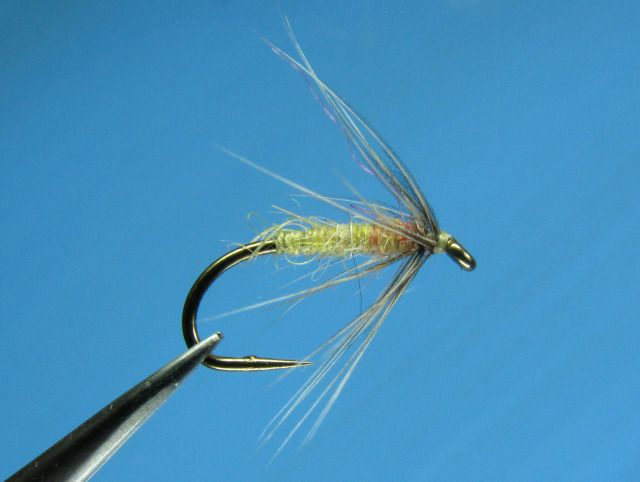
The comparisons are not accurate because the desired result wasn't the same, but the construction of these two is different.
Tups CdL 3913B on a dropped loop
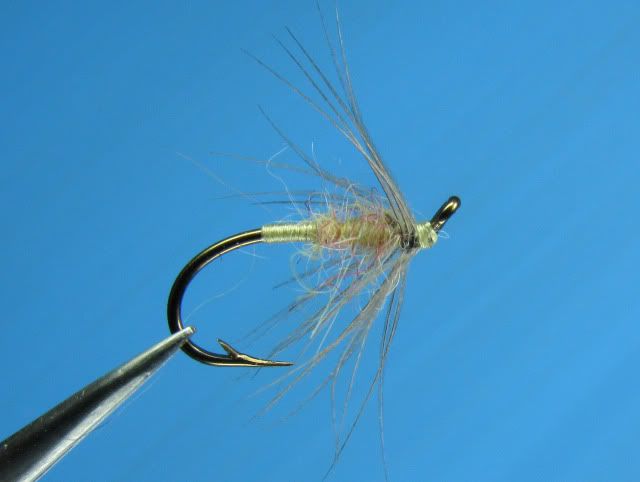
I need some more practice at dubbing the loops on the block.
Tups CdL 1530 on Clark's block #2
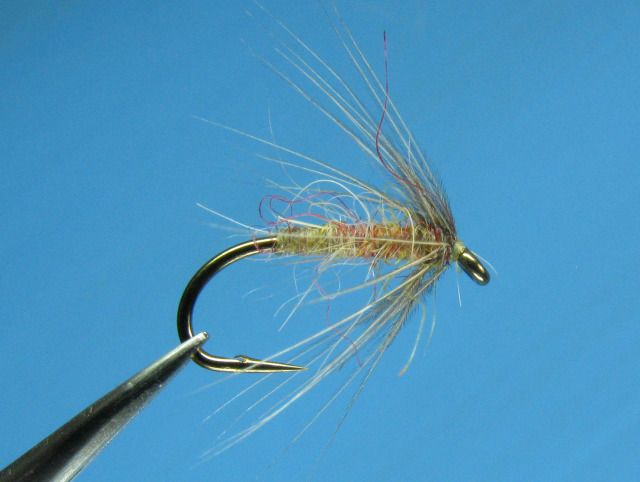
Pine Squirrel On Primrose
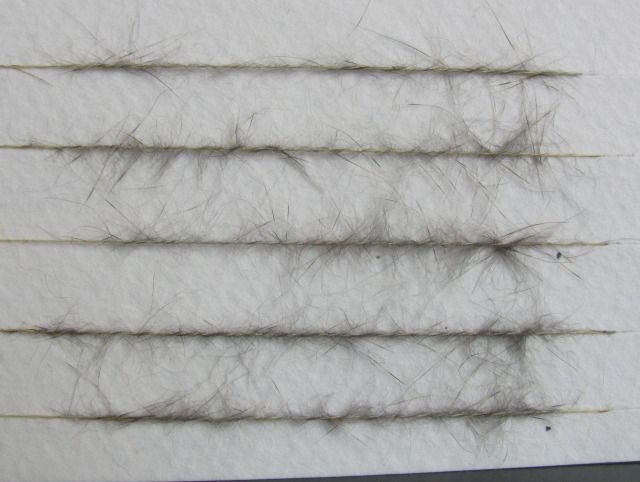
Muskrat on Primrose
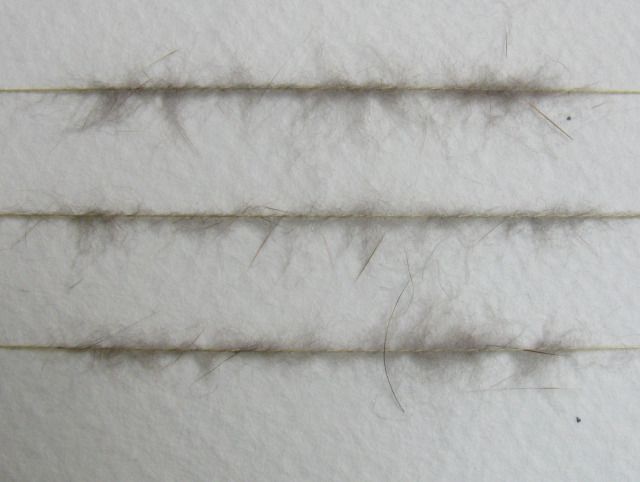
Australian Opossum on Primrose
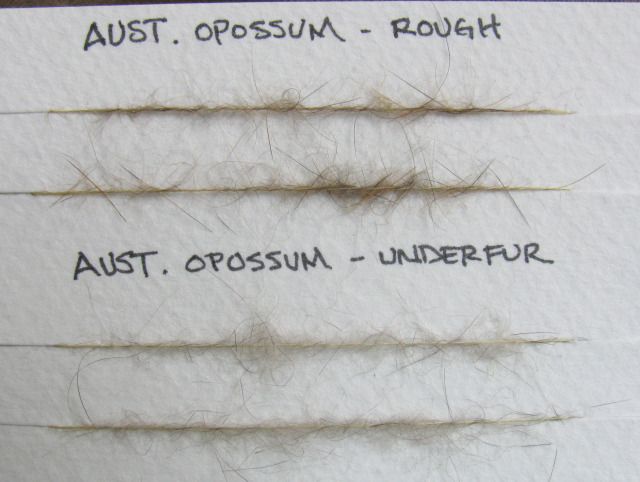
Hares Ear on Primrose
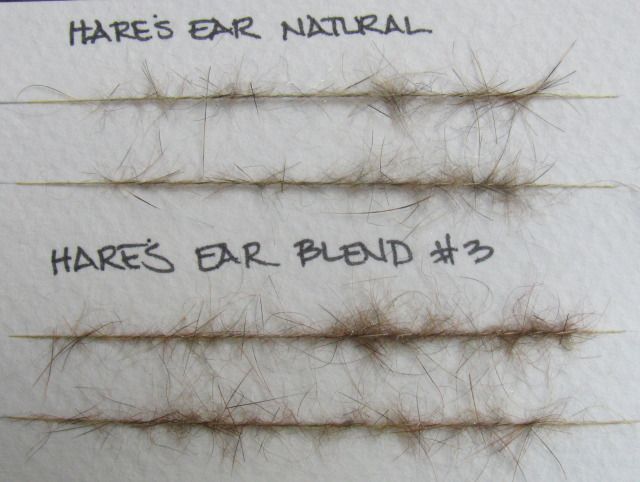
These earlier cards are all too dense for smaller flies. They looked okay, but the bodies turn out too fat. More practice.
This is a Tups variant using the portion of silk loop without dubbing as the rear half, rather than un-dubbed buttontwist as the rear. The look of the heavier waxed silk is probably similar to the wet silk buttontwist, but it is different. I used Griffith's 14/0 to tie in the dubbing loop of Pearsall's Gossamer. It's a quick and clean operation.
Tups CdL 1530 on a Clark's block

The comparisons are not accurate because the desired result wasn't the same, but the construction of these two is different.
Tups CdL 3913B on a dropped loop

I need some more practice at dubbing the loops on the block.
Tups CdL 1530 on Clark's block #2

Pine Squirrel On Primrose

Muskrat on Primrose

Australian Opossum on Primrose

Hares Ear on Primrose

These earlier cards are all too dense for smaller flies. They looked okay, but the bodies turn out too fat. More practice.
"A man should not try to eliminate his complexes, but rather come into accord with them. They are ultimately what directs his conduct in the world." Sigmund Freud.
www.WilliamsFavorite.com
www.WilliamsFavorite.com
- letumgo
- Site Admin
- Posts: 13346
- Joined: Sat Feb 21, 2009 7:55 pm
- Location: Buffalo, New York
- Contact:
Re: Clark's Dubbing Blocks
William - Outstanding flies! I an not pick a favorite among the group. The reference photos of the dubbing brushes are very helpful.
I sent a note to Lance and he gave me permission to post photos of his fathers spinning blocks (thanks Lance). So here are a few photos showing the famous spinning blocks made by Pete Hidy.
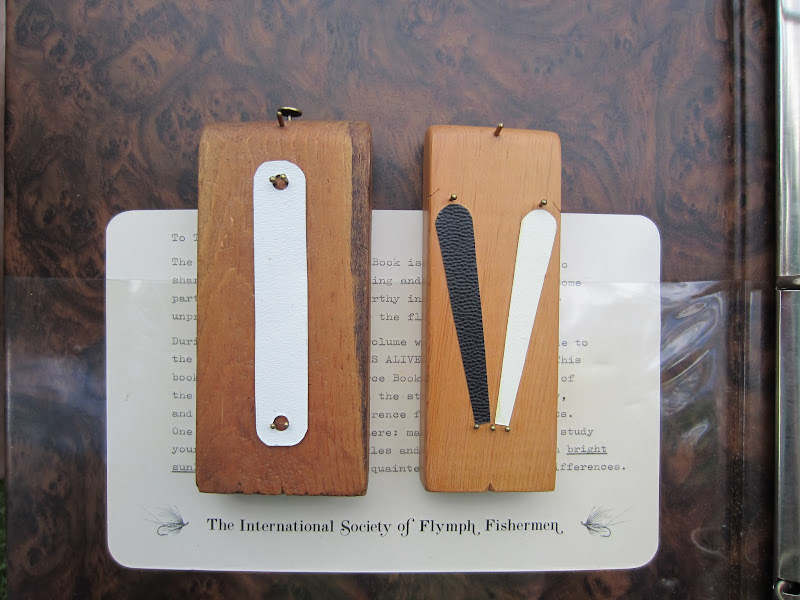



Some of the waxes used to prepare the silk threads.
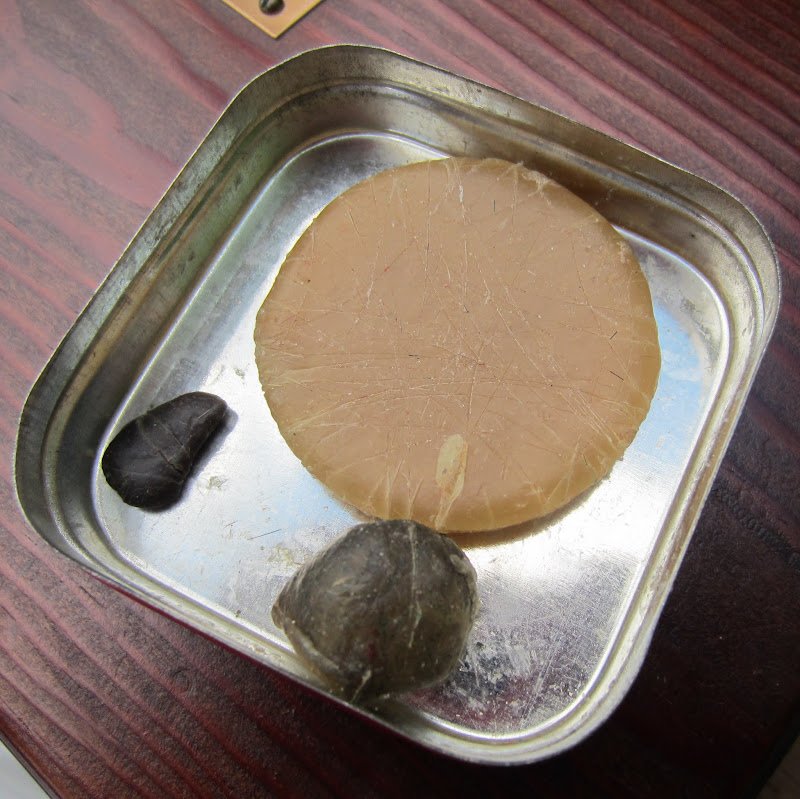
I sent a note to Lance and he gave me permission to post photos of his fathers spinning blocks (thanks Lance). So here are a few photos showing the famous spinning blocks made by Pete Hidy.
Some of the waxes used to prepare the silk threads.
Ray (letumgo)----<°))))))><
http://www.flytyingforum.com/index.php? ... er=letumgo
"The world is perfect. Appreciate the details." - Dean
http://www.flytyingforum.com/index.php? ... er=letumgo
"The world is perfect. Appreciate the details." - Dean
Re: Clark's Dubbing Blocks
Guys,
This thread is fantastic! The photo richness is not a bad thing William! I am just blown away W. with the different spun bodies on the cards as you have placed them and marked them so well! You are really taking the practice and the pleasure of spinning these bodies to a new level! I, for one, really appreciate all you are and will be doing in this intriguing field.
Ray, I am captivated by the photo's of the Pete Hidy blocks that you have posted with Lances permission (thanks Lance). Pete, like you and William and Bill, was an innovator and very much ahead of his time in terms of grand ideas about such a simple but beautiful and pleasing process of spinning bodies. I really like being on the cusp of all the wonderful things that I have both seen (in Rosoce) and am seeing on the forum. Thank you everyone for bringing it all to the fore!
Simply amazed and so very pleased with it all,
Dougsden
This thread is fantastic! The photo richness is not a bad thing William! I am just blown away W. with the different spun bodies on the cards as you have placed them and marked them so well! You are really taking the practice and the pleasure of spinning these bodies to a new level! I, for one, really appreciate all you are and will be doing in this intriguing field.
Ray, I am captivated by the photo's of the Pete Hidy blocks that you have posted with Lances permission (thanks Lance). Pete, like you and William and Bill, was an innovator and very much ahead of his time in terms of grand ideas about such a simple but beautiful and pleasing process of spinning bodies. I really like being on the cusp of all the wonderful things that I have both seen (in Rosoce) and am seeing on the forum. Thank you everyone for bringing it all to the fore!
Simply amazed and so very pleased with it all,
Dougsden
Fish when you can, not when you should! Anything short of this is just a disaster.
- letumgo
- Site Admin
- Posts: 13346
- Joined: Sat Feb 21, 2009 7:55 pm
- Location: Buffalo, New York
- Contact:
Re: Clark's Dubbing Blocks
Doug - Is that you holding the spinning block?
Ray (letumgo)----<°))))))><
http://www.flytyingforum.com/index.php? ... er=letumgo
"The world is perfect. Appreciate the details." - Dean
http://www.flytyingforum.com/index.php? ... er=letumgo
"The world is perfect. Appreciate the details." - Dean
Re: Clark's Dubbing Blocks
Very interesting thread indeed. I have some pictures of my dubbingblock, as you can see I hope I use it with the thread 180 degrees turned: the loop is on my side and the two loose ends on the other so I can spin with a dremel also.

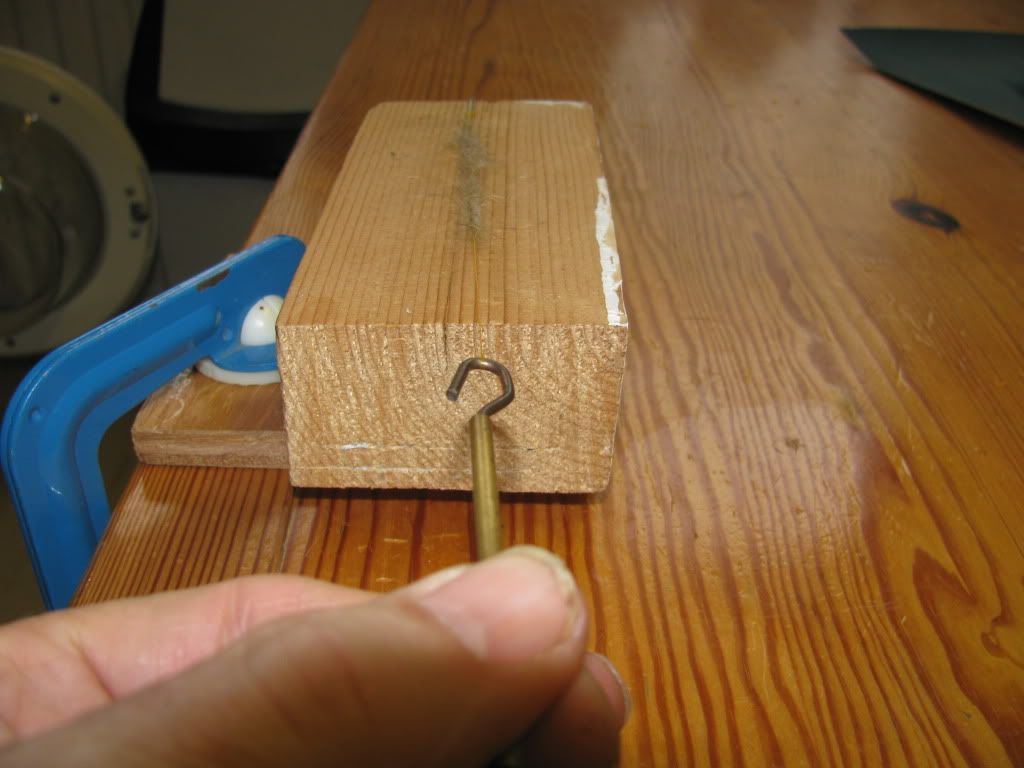
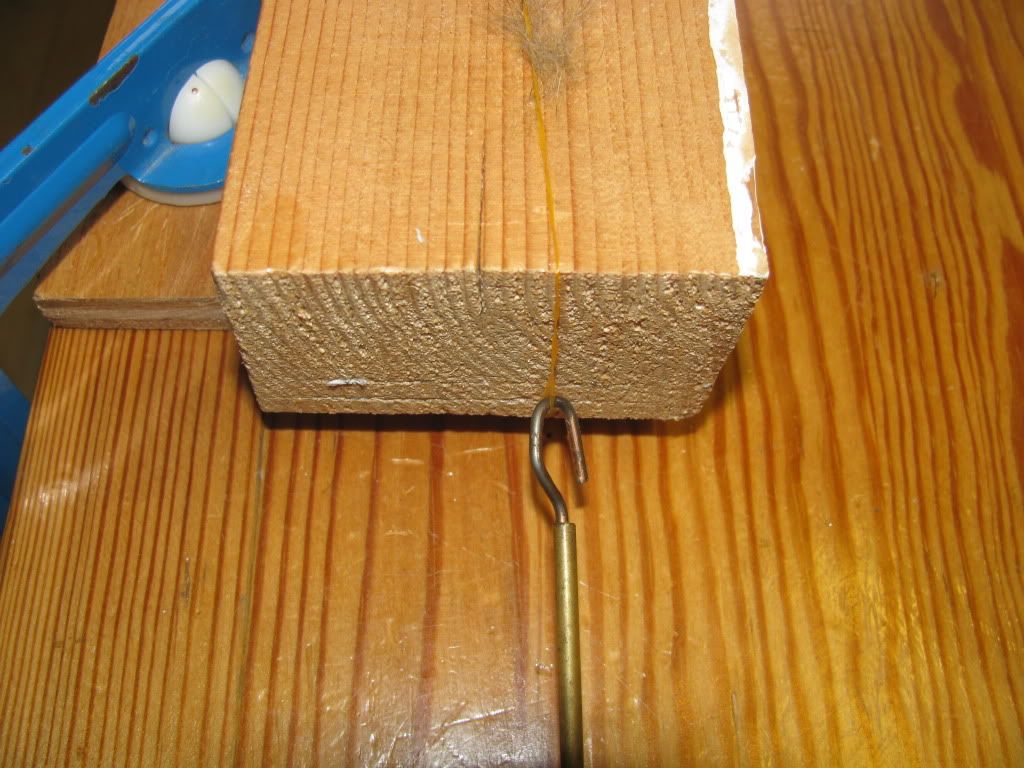

Greeting




Greeting
There will allways be a solution.
http://www.aflyinholland.nl
http://www.aflyinholland.nl
- William Anderson
- Site Admin
- Posts: 4569
- Joined: Mon Feb 23, 2009 3:14 pm
- Location: Ashburn, VA 20148
- Contact:
Re: Clark's Dubbing Blocks
Thanks Doug. You really got the ball rolling for me. It was always the next thing on my list, but for months the block went unbuilt. I appreciate your putting so many blocks in our hands to move this inquiry along.
Ruard, thanks so much for sharing your operation. I know you've been doing this for awhile and showed your assembly before, but it is wonderful to have it in the context of the varied methods of using these blocks. You might want to chime in on the following question along with others who have been at this for a bit.
GD, I have a question for you. I was able to look at a large number (over 100 ?) of Hidy's actual cards stored for his own use, and those made up for the collection in the binder and other archival purposes. What I remember is that most all the cards showed the same length of silk and the dubbed portion was clearly tapered, but to my eye virtually the same length as well. I could be mistaken and in the joy of seeing so much of the material at the same time, surely many of the finer points escaped me. But even looking back at the photos I have I don't see where Pete had indicated on one card or the other what size fly he intended to tie with any given card. I would expect to see with his immaculate notations and penchant for accuracy in the details a note on each card and an adjusted size of the dubbing density, size and length for each fly. I can say from my fooling around with making scores of loops and then trying to tie with them that I am typically using about half the loop on #14's and less on #16's, and have yet to find the sweet spot for tying #12's. That said, I haven't actually created cards designed for any particular size or hook type (1530's vs 1550's), but after doing a number of flies I can say I am not happy watching the dubbing create the thorax with a good portion of the dubbed section snipped and dropped in the bin. I can easily see where some blends would be much sparser when designed for particular mayflies (muskrat and primrose) where my more robust Hares Ear blends are denser intended for caddis flies. That was vaguely evident in the cards I saw from Pete, but I still expect to see a further variance from card to card.
It very well could be that creating the loops with the newly blended dubbing was a very removed process and then sitting to tie flies begins with flipping through the various cards to find the right blend, then using the desired length from the overall loop constructed.
Any thoughts on created cards designated for a particular size of fly or hook type? I was especially glad to see in person the collection of hook types described as "best suited" for flymphs, and then seeing such a diverse group. The idea of these seemingly vague, impressionistic flies actually matching insects in nearly every way really speaks to my more generalist leanings and nails the entomolical imitation study spot on. Both exceptional attractors and brilliant imitations, especially with regard to the hooks used to structure the overall result.
I'm curious to hear as well of who has spent time fooling around with these blocks. I know there are a large number, but it would help to get an idea, maybe even be surprised by some responses, of those among us who use this process on a regular basis.
w
Ruard, thanks so much for sharing your operation. I know you've been doing this for awhile and showed your assembly before, but it is wonderful to have it in the context of the varied methods of using these blocks. You might want to chime in on the following question along with others who have been at this for a bit.
GD, I have a question for you. I was able to look at a large number (over 100 ?) of Hidy's actual cards stored for his own use, and those made up for the collection in the binder and other archival purposes. What I remember is that most all the cards showed the same length of silk and the dubbed portion was clearly tapered, but to my eye virtually the same length as well. I could be mistaken and in the joy of seeing so much of the material at the same time, surely many of the finer points escaped me. But even looking back at the photos I have I don't see where Pete had indicated on one card or the other what size fly he intended to tie with any given card. I would expect to see with his immaculate notations and penchant for accuracy in the details a note on each card and an adjusted size of the dubbing density, size and length for each fly. I can say from my fooling around with making scores of loops and then trying to tie with them that I am typically using about half the loop on #14's and less on #16's, and have yet to find the sweet spot for tying #12's. That said, I haven't actually created cards designed for any particular size or hook type (1530's vs 1550's), but after doing a number of flies I can say I am not happy watching the dubbing create the thorax with a good portion of the dubbed section snipped and dropped in the bin. I can easily see where some blends would be much sparser when designed for particular mayflies (muskrat and primrose) where my more robust Hares Ear blends are denser intended for caddis flies. That was vaguely evident in the cards I saw from Pete, but I still expect to see a further variance from card to card.
It very well could be that creating the loops with the newly blended dubbing was a very removed process and then sitting to tie flies begins with flipping through the various cards to find the right blend, then using the desired length from the overall loop constructed.
Any thoughts on created cards designated for a particular size of fly or hook type? I was especially glad to see in person the collection of hook types described as "best suited" for flymphs, and then seeing such a diverse group. The idea of these seemingly vague, impressionistic flies actually matching insects in nearly every way really speaks to my more generalist leanings and nails the entomolical imitation study spot on. Both exceptional attractors and brilliant imitations, especially with regard to the hooks used to structure the overall result.
I'm curious to hear as well of who has spent time fooling around with these blocks. I know there are a large number, but it would help to get an idea, maybe even be surprised by some responses, of those among us who use this process on a regular basis.
w
"A man should not try to eliminate his complexes, but rather come into accord with them. They are ultimately what directs his conduct in the world." Sigmund Freud.
www.WilliamsFavorite.com
www.WilliamsFavorite.com
- William Anderson
- Site Admin
- Posts: 4569
- Joined: Mon Feb 23, 2009 3:14 pm
- Location: Ashburn, VA 20148
- Contact:
Re: Clark's Dubbing Blocks
I should wait, rather than confuse things, but the next couple days could get hairy, so I'll post these while I have the computer out. 
I have put together a number of block loops using both Pearsall's Gossamer silk and Sulky Rayon threads, knowing there would be sufficient color shift and blending using the rayon, and it worked, but I couldn't get the loops to stick together. This of course before Lance mentioned that the synthetic threads didn't congeal the way silk does with the wax. These actually worked well enough, but I had to retwist them partially before wrapping them on the shank. The price of 800 yards of rayon is nothing, especially compared to the silk, but you get what you pay for. Here are a couple flies tied using the rayon silk.
Badger Rayon 1530 dry
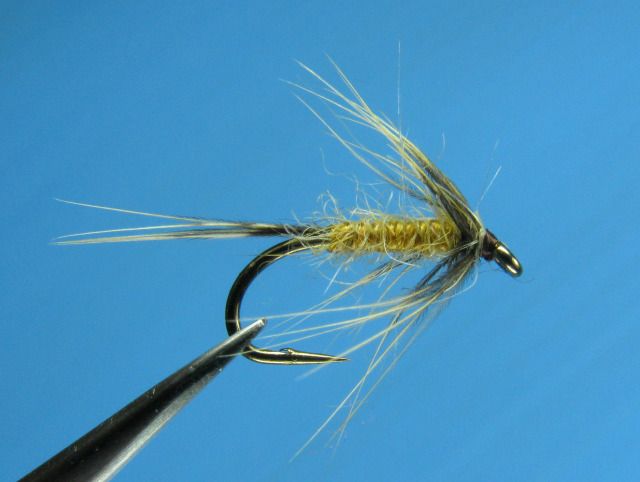
Badger Rayon 1530 wet
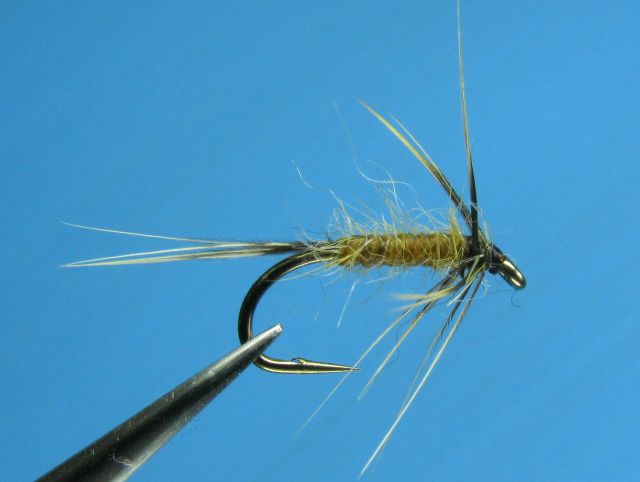
Another issue is consistency. I'm hoping this will come with time, but I find it much harder to control the exact desired effect using a premade loop. They are buggy and sure look effective, but I can't get two to turn out just the same. Part of that might also be the playing around with tying in at different points, allowing some of the undubbed portion to occupy the first few wraps before the finest part of the dubbing taper begins its journey up the shank. Here is another from that same session using several undubbed wraps to begin the adbomin.
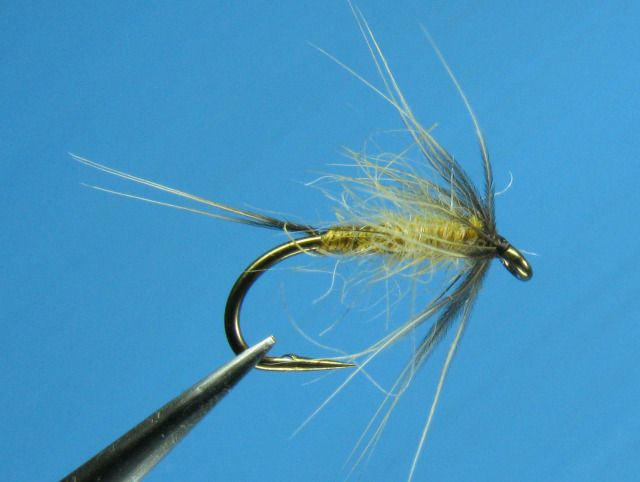
Any pointers would be greatly appreciated.
w
I have put together a number of block loops using both Pearsall's Gossamer silk and Sulky Rayon threads, knowing there would be sufficient color shift and blending using the rayon, and it worked, but I couldn't get the loops to stick together. This of course before Lance mentioned that the synthetic threads didn't congeal the way silk does with the wax. These actually worked well enough, but I had to retwist them partially before wrapping them on the shank. The price of 800 yards of rayon is nothing, especially compared to the silk, but you get what you pay for. Here are a couple flies tied using the rayon silk.
Badger Rayon 1530 dry

Badger Rayon 1530 wet

Another issue is consistency. I'm hoping this will come with time, but I find it much harder to control the exact desired effect using a premade loop. They are buggy and sure look effective, but I can't get two to turn out just the same. Part of that might also be the playing around with tying in at different points, allowing some of the undubbed portion to occupy the first few wraps before the finest part of the dubbing taper begins its journey up the shank. Here is another from that same session using several undubbed wraps to begin the adbomin.

Any pointers would be greatly appreciated.
w
"A man should not try to eliminate his complexes, but rather come into accord with them. They are ultimately what directs his conduct in the world." Sigmund Freud.
www.WilliamsFavorite.com
www.WilliamsFavorite.com
